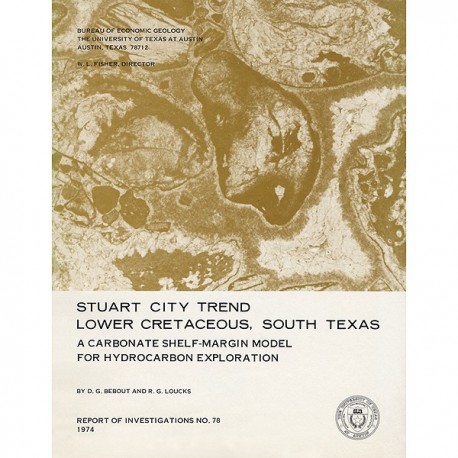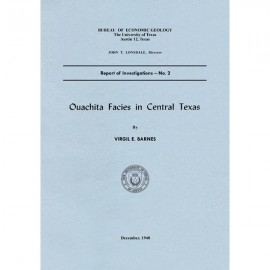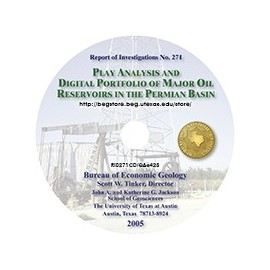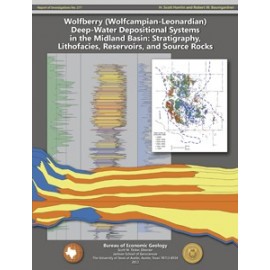Reports of Investigations
-
Books & Reports
- Reports of Investigations
- Guidebooks
- Udden Series
- Geological Circulars
- Down To Earth
- Atlases of Major Oil and Gas Reservoirs
- Texas Memorial Museum Publications
- Environmental Geologic Atlas of the Texas Coastal Zone
- Mineral Resource Circulars
- Other Reports
- Seminars and Workshops
- Handbooks
- Submerged Lands of Texas
- Symposia
- Annual Reports
- Open File Reports
-
Maps & Cross Sections
- Thematic Maps
- Miscellaneous Maps, Charts & Sections
- Geologic Atlas of Texas
- STATEMAP Project Maps
- Geologic Quadrangle Maps
- Cross Sections
- Highway Geology Map
- Energy and Mineral Resource Maps
- Shoreline Change and Other Posters
- Wilcox Group, East Texas, Geological / Hydrological Folios
- Bouguer Gravity Atlas of Texas
- River Basin Regional Studies
- Featured Maps
- Posters
- Teachers & the Public
-
Geological Society Publications
- Gulf Coast Association of Geological Societies
- Alabama Geological Society
- Austin Geological Society
- Corpus Christi Geological Society
- Houston Geological Society
- Lafayette Geological Society
- Mississippi Geological Society
- New Orleans Geological Society
- South Texas Geological Society
- GCS SEPM Publications
- Historic BEG & UT Series

Stuart City Trend, Lower Cretaceous, South Texas: A Carbonate Shelf-Margin Model for Hydrocarbon Exploration
RI0078
Stuart City Trend, Lower Cretaceous, South Texas: A Carbonate Shelf-Margin Model for Hydrocarbon Exploration, by D. G. Bebout and R. G. Loucks. 80 p., 44 figs., 3 tables, 1974. Print Version.
A free, digital version of this publication can be found on: Texas ScholarWorks
RI0078. Stuart City Trend, Lower Cretaceous, South Texas: A Carbonate Shelf-Margin Model for Hydrocarbon Exploration, by D. G. Bebout and R. G. Loucks. 80 p., 44 figs., 3 tables, 1974. To purchase this publication as a downloadable PDF, please order RI0078D.
Excerpted from the SUMMARY
Lower Cretaceous shallow-water carbonates accumulated on a broad shelf which completely encircled the Gulf of Mexico. Biogenic growth climaxed along the basinward edge, or shelf margin, where a complex of reefs, banks, bars, and islands developed. The sediments reached a total thickness of 2,000 to 2,500 feet; numerous deep wells ranging in total depth from 11,000 to 20,000 feet have resulted in the discovery of a few marginally productive gas fields.
The objectives of this study are: (I) to describe the depositional facies and environments present along this trend in order to provide a model for further hydrocarbon exploration along the Stuart City Trend and also in the deeper Sligo Trend, and (2) to identify diagenetic processes which relate to porosity distribution and might lead to the discovery of zones of higher porosity elsewhere along the trend.
Keywords: carbonates, Cretaceous, depositional environments, facies, Sligo Trend, Stuart City Trend, Texas
Citation
Bebout, D. G., and Loucks, R. G., 1974, Stuart City Trend, Lower Cretaceous, South Texas: A Carbonate Shelf-Margin Model for Hydrocarbon Exploration: The University of Texas at Austin, Bureau of Economic Geology, Report of Investigations No. 78, 80 p.




